Condo Painting Dos and Don’ts

Feb 26, 2024 February 26, 2024
Painting your home can be a daunting prospect, from the color selection to cleaning up the mess. After all, it is a complex procedure — who knew there were 52 shades of white?!—, and whatever color you do end up choosing will dictate the mood and feel of your entire condo or home, so no pressure!
However, when done right, a good paint job is a relatively easy way to renovate your condo and give it a well-needed facelift before selling it, renting it out, or enjoying living there. So, grab your paint color samples, and let’s discuss some condo painting ideas to get your property in tip-top shape.
— What Color Should You Paint Each Room?
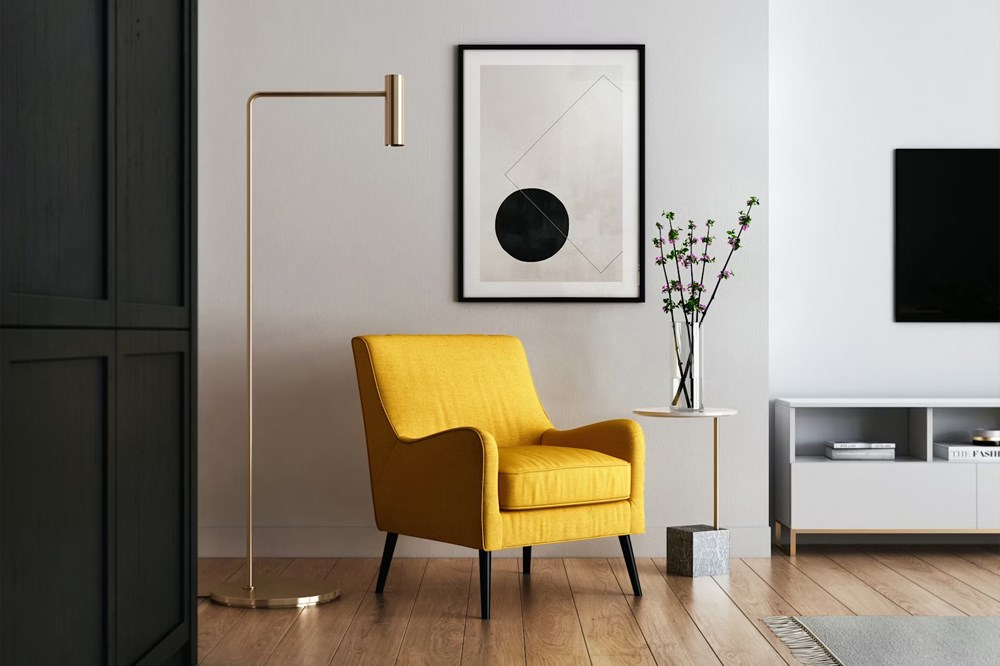
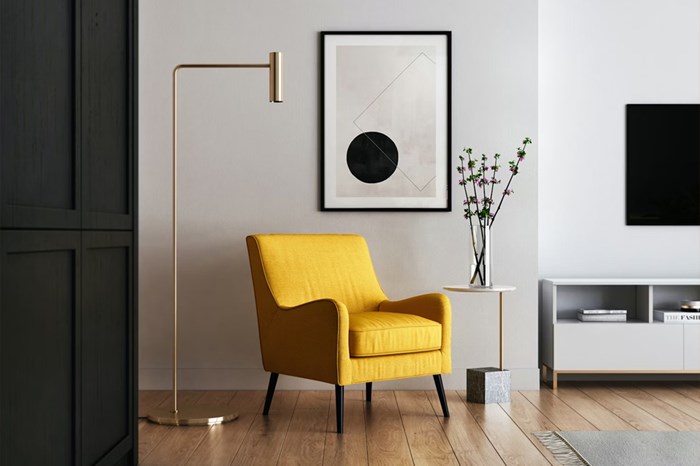
At the end of the day, you should paint your house in whatever color floats your boat! You have to live there, after all. That being said, there are definitely good and bad paint colors, depending on your needs and purpose. The colors and combinations you choose will ultimately have an impact on the look, and more importantly, the feel of your home, and this can be pivotal when it comes time to sell.
According to Benjamin Moore, a room can drastically change whether you choose warmer or cooler tones, as the first ones add energy and the latter ones create a more calming atmosphere. In turn, saturated color can create a cozy environment, while pale shades lend to an airier feel. Working within a color scheme or palette can help ensure that the interior colors are balanced and unified.
So, how do you choose the right color? It will be determined by several factors, such as the amount of space and light you have or the type of room you’re painting. As a rule of thumb, it is always safe to go with lighter tones as these tend to create an illusion of amplitude and help reflect more light in a room.
In our experience, neutrals are the best colors to paint a condo for sale. They appeal to a wider pool of buyers because it is easier for them to envisage themselves in the property. More dramatic or dark colors, while trendy, can be distracting for future buyers.
— Tips for Choosing a Paint Color by Room
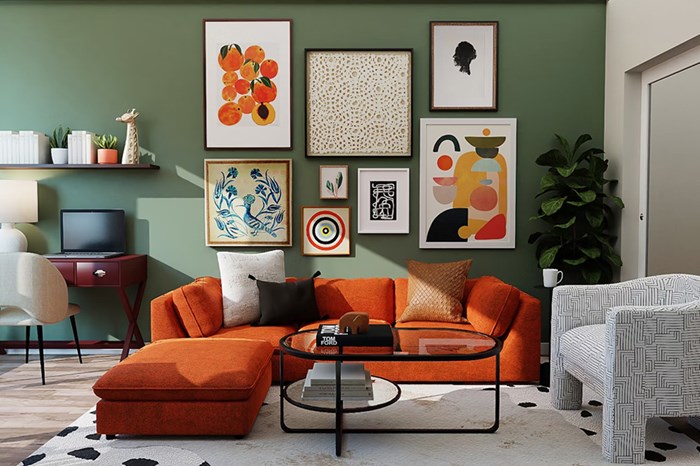
Here are some condo painting ideas from our years of selling properties:
- Painting whole interiors: Neutrals are typically the way to go and you can certainly paint your condo all one color. Gray, beige, white, and earth tones exude calmness and set the perfect stage to add pops of color with furniture and decor.
- Painting living rooms: A light gray or a soft beige is always a good bet. These colors are crisp and offer a clean feel without the danger of small marks showing too clearly. After all, you don’t want to be cleaning your walls 24/7. These tones are also neutral, making them a safe option for sellers.
- Painting bathrooms: Houses with light-blue bathrooms nearly always sell for more.
- Painting kitchens: It can depend on the colors of your cabinets and countertops, the style of your kitchen (modern and sleek or traditional and warm), how much natural light it has, or if it is open and connected to the living space. Generally, plain white isn’t that appealing.
- Painting bedrooms: Bedrooms allow for more color to express yourself, and there is no right or wrong. For a more relaxed vibe, favor cooler tones like soft blues or greens. Warmer tones create cozy and intimate spaces. Generally, though, people opt for a softer palette.
If you need help visualizing what a color could look like in a certain area of the house, Behr Paints has a color visualizer you can try out by room, and also a color suggestion tool based on room and style. Of course, if you’re renting, whether you can change the paint color has to be on your list of questions to ask before renting.
- Condo Painting DO: Use nice neutral tones. This will create space and resonate with buyers.
- Condo Painting DON’T: Use dark colors or extreme hues. Extreme colors distract people from the house. Dark walls make the rooms feel smaller and the ceilings lower.
- Condo Painting DO: Think about painting a ceiling as a contrast statement to a room, it can add great visual interest to any room and isn’t that difficult to do.
— What Is the Right Paint Finish — Flat, Eggshell, or Satin?
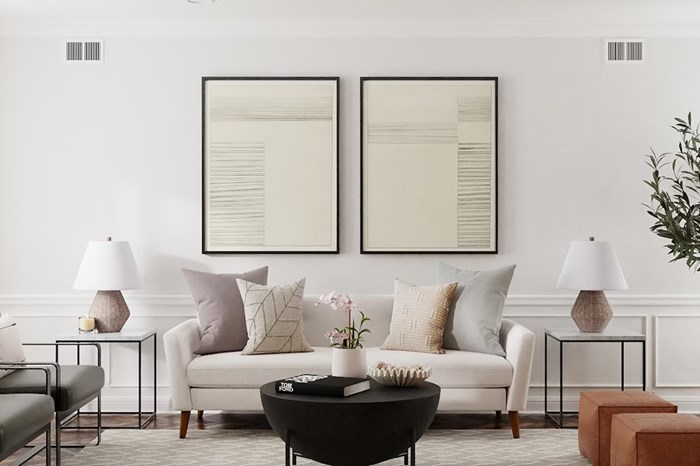
Commercially, there are anywhere between three to seven standard paint finishes depending on the brand. Think of a paint finish as how much sheen and shine your paint will have. Matte finishes have very little shine or reflection, while Gloss finishes have the most sheen and shine. Some of the most common paint finishes include flat, eggshell, satin, semi-gloss, and high gloss. Which one of these is best depends on what area of the house you are painting and the material you are covering.
Flat Finish
Matte and flat finishes are great for ceilings or interior walls with low traffic. These finishes do a great job of covering up imperfections thanks to the lack of sheen. One thing to bear in mind, however, is that they tend to get dirtier much more quickly, and they are also harder to clean. Scrubbing can quickly get rid of the actual finish if you’re not careful.
Eggshell/Satin Finish
The satin finish is often affectionately referred to as the ‘eggshell finish’ due to its distinctive glint. Satin finishes reflect a lot more light when compared to a matte finish. But they also resist stains quite well, and therefore are a favorite for medium–to-high traffic areas. When you’re entertaining you want that effect to provide sparkle and energy, which is perfect for dining rooms, living rooms, and other favorites areas of a home. This finish is also more resistant to normal wear and tear than a matte or flat finish.
Semi-Gloss/High-Gloss
The thing that really sets semi-gloss and high-gloss paint apart is its durability and moisture resistance. This makes it a favorite for kitchens and bathrooms where the walls are far more susceptible to mold. Semi- and high-gloss finishes are also much tougher compared to the other two types, which means you can clean and scrub it without having to worry too much about removing the coat.
- Painting Finish DO: Think about the amount of traffic the area you’re about to paint normally gets.
- Painting Finish DON’T: Use a flat or matte finish in rooms susceptible to mold or high traffic areas.
— Painting Doors and Trim
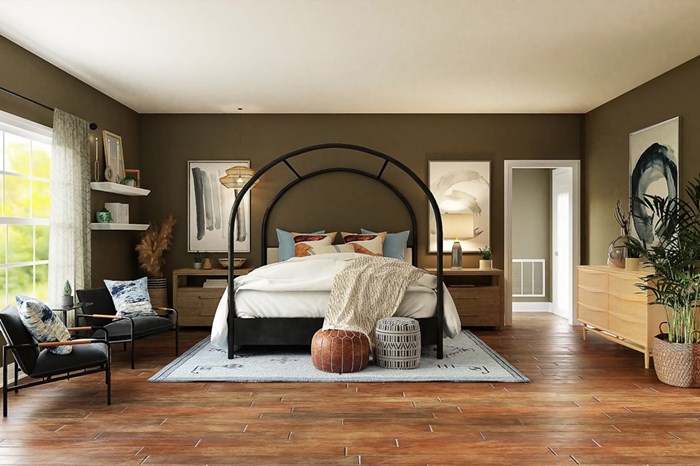
The main question here is: do you want them to stand out or blend in? If you want your doors to be highlighted, you should look for colors that accentuate the feature. For front doors, darker tones might be your allies, or a simple coat of varnish, if you have a wooden door, might be enough to highlight the material’s natural beauty.
If however, you want to paint your interior doors and trim, it’s recommended to find a similar tone to the one used on the walls and ceiling. Even if you are only off by a few shades the door will stand out like a sore thumb.
Also, the paint finish for doors and trims is really important. Here, the most recommended are semi-gloss or high-gloss for their resistance due to the amount of traffic these receive. Higher gloss paints have a tighter molecular structure so it’s harder for dirt and other messes to stain the paint.
Traditional trim paint will be oil-based, and many interior decorators will recommend using it to make the glossy finish last, however, it can take longer to dry and requires good ventilation. An alternative to this is a water-based, acrylic-latex blend, which doesn’t produce quite as shiny of a finish, and will show brush marks, but dries faster and is much easier to clean up.
- Painting Trim & Doors DO: Choose a semi- or high-gloss finish to prevent them from getting dirty too quickly.
- Painting Trim & Doors DON’T: Use the wrong tone on the door. It will stand out and look sloppy!
— Special Paint for Special Purposes
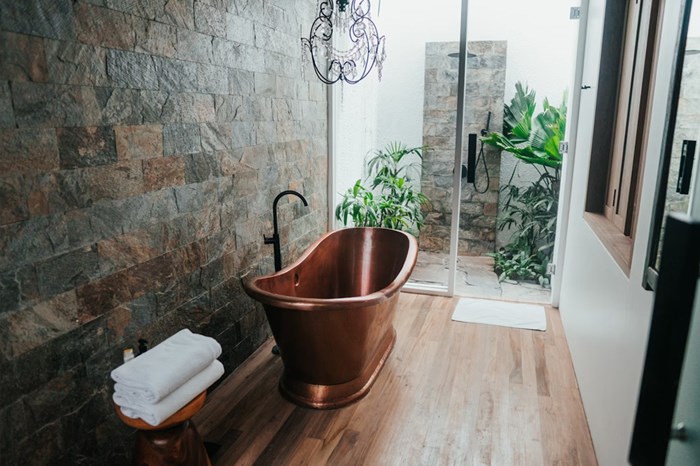
In addition to different paint colors, finishes, and compositions, there are also different kinds of paint for different uses.
Water-Resistant for Bathrooms
Paints that will be used in more damp or wet areas need mold or mildew-resistant paint. Most manufacturers offer bathroom paints with mildew protection. For example, Benjamin Moore’s Aura Bath and Spa paint is specially made for high moisture areas, while Sherwin Williams’ Emerald line of paints offers similar protection. Also, experts recommend using a moisture-resistant primer first to prevent the paint from peeling if you’re not using an all-in-one paint and primer.
Risk-Free Playrooms & Living Rooms
In addition to moisture-resistant paints, almost all paint companies offer washable paints, which really can be valuable for families with children and pets. Washable paints repel and release stains more easily. Valspar’s Ultra line of all-in-one paint and primer is an acrylic-based formula that protects from everyday scuffs, marks & wear making it easy to wash off.
- Room Painting DO: Use a primer on most surfaces to make the paint work better.
- Room Painting DON’T: Use regular paint on all the rooms. Mold-resistant paint is best for bathrooms and kitchens.
— Who Should Paint My Condo?
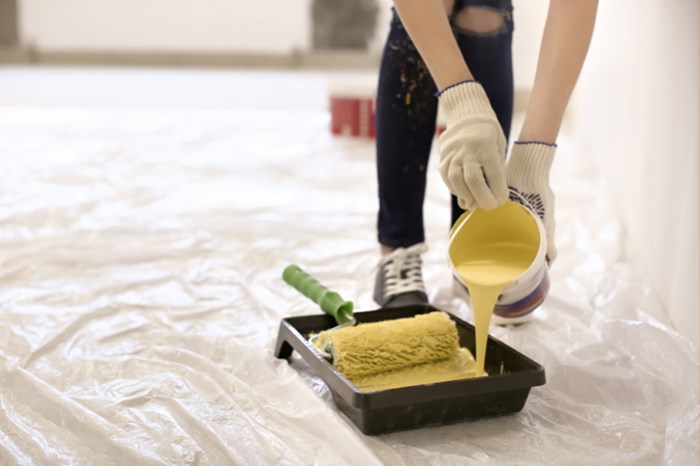
While you certainly can paint your own condo, and do it as often as you like, there is a lot of work that goes into it, even more so if you want a polished look. Most of the effort goes into the preparation of the walls because paint alone won’t hide cracks or marks. Also, completing the job takes a lot of time —sometimes a single room can take up to seven hours!
So, if you’re interested in selling soon and want to do your whole condo, doors and all, your best bet is hiring a professional painter or skilled handyman to do the job. Condo painting costs in Miami vary according to the square footage, how soon you need the service, how fast you need it done and what kind of materials you use, but a general rule of thumb would be to calculate $3 - $5 per square foot. And believe us, once your painting job is finished and done well, it can be highly rewarding and a great return on your investment!
- Painter DO: Hiring a professional and telling them what you want is the best way to ensure a job well done.
- Painter DON’T: Cutting costs by hiring someone inexperienced or doing it yourself can bring headaches in the long run.
Now that you have all these condo painting ideas and are ready to get it all set up, contact us if you need to find the right vendor or if you want to sell your condo. We’ll be happy to help you get your condo in top shape and staged for showings. Reach out to us by email, phone or text!
Share your thoughts with us
Your Miami Condo Awaits
Recent Posts








